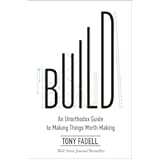Navigating the Financial Maze: Essential Strategies for Robust Retirement Planning
The dream of retirement, often envisioned as a serene escape into “the good life,” can feel distant and shrouded in financial ambiguity for many. A common scenario involves individuals who, despite diligently managing their daily finances and excelling in their professional lives, find themselves overlooking the crucial aspects of long-term wealth accumulation. This oversight frequently stems from a prevalent societal focus on immediate gratification, where the acquisition of more, whether it be gadgets or exotic experiences, overshadows the imperative of planning for later life. As eloquently discussed in the video above, a paradigm shift is critically required; our attention must be directed not only towards intentionally living for today but also towards meticulously planning for tomorrow. This shift represents a proactive engagement with one’s financial future, enabling informed decisions and strategic investments that pave the way for a truly comfortable retirement.
1. Understanding the Imperative of Proactive Retirement Planning
The ramifications of inadequate preparation for retirement are often understated, yet their impact is invariably disheartening. It is widely observed that a significant proportion of the population, even successful professionals, may be operating with an ‘unconscious attitude’ towards their finances. This detachment, while allowing for day-to-day sustenance, creates a substantial disconnect from the future financial landscape. For instance, in the UK, the average income for pensioner couples is reported to be approximately £2,200 per month. This figure, while not negligible, falls considerably short of the estimated £3,500 per month required for a comfortable retirement, as suggested by the Pensions and Lifetime Savings Association, particularly when assuming no ongoing housing costs. The disparity between these figures underscores a critical gap that necessitates diligent and expert-guided retirement planning.
Imagine if, after decades of dedicated work, one’s post-retirement lifestyle was dictated by financial constraints rather than personal aspirations. This is a reality for many, as illustrated by situations where elderly individuals are compelled to continue working part-time, not by choice, but by necessity. Furthermore, the emotional toll of downsizing a cherished family home to accommodate reduced financial resources is frequently encountered. Such scenarios are stark reminders of the profound consequences that can arise from a failure to prioritize long-term financial foresight. Therefore, it is understood that merely earning a substantial income is insufficient without a conscious and strategic approach to its allocation for future needs.
2. Unveiling Your Ideal Retirement Vision
A pivotal step in effective retirement planning is the meticulous articulation of one’s ideal post-career existence. Before any numbers are crunched or investment portfolios are constructed, a clear and vivid vision of “the good life” must be established. This is not merely a pleasant daydream; rather, it is a foundational exercise that directly informs the magnitude of the financial resources that will ultimately be required. What gets measured is indeed managed, and the scope of one’s retirement aspirations profoundly influences the subsequent financial blueprint.
Consider taking a moment to fully immerse oneself in this future reality. Is one’s ideal retirement defined by the warmth of the sun on a pristine beach, the tranquility of country trails, or perhaps the vibrant aroma of freshly brewed coffee in a quaint European town? These tangible experiences and sensory details are instrumental in quantifying the lifestyle costs associated with one’s desired future. Without this concrete vision, the investment pot needed to sustain such a lifestyle remains an abstract and unattainable target. Therefore, it is crucial that this personal reflection precedes the more technical aspects of financial assessment.
3. Demystifying the Numbers: The Rule of 375 for Retirement Nest Egg Estimation
Once a clear vision of an ideal retirement has been established, the practical question of how much capital is required to achieve it inevitably arises. To provide a preliminary estimation, a useful guideline known as the Rule of 375 can be employed. This rule offers a simplified mechanism for approximating the size of the investment nest egg needed today to sustain a specific monthly spending requirement over a typical 30-year retirement period. It is conceptually derived from the widely recognized 4% rule, which suggests a sustainable withdrawal rate from an investment portfolio, and further adjusts for a rough 20% tax allowance, as expenses are typically considered on a net-of-tax basis.
To illustrate its practical application, imagine that an individual or couple has determined a desired monthly retirement income of £3,500, aligning with the “comfortable” living standard previously referenced. The calculation involves a straightforward multiplication: £3,500 multiplied by 375. The resulting figure, £1,312,500, represents the estimated investment pot required at the point of retirement to maintain this level of expenditure. This substantial figure, exceeding 1.3 million pounds, serves as a powerful reality check, underscoring the considerable financial commitment necessary for achieving a truly comfortable retirement. It highlights the imperative of commencing robust retirement planning and investment strategies well in advance.
4. Beyond the Rule: Holistic Financial Planning for a Secure Future
While the Rule of 375 provides a valuable preliminary estimate for a retirement nest egg, it is important to acknowledge that this is merely a simplified projection. The intricate landscape of financial planning necessitates a far more granular and personalized analysis. Numerous variables can significantly influence the actual capital required and the most effective strategies for accumulating it. For example, the impact of inflation on purchasing power over a 30-year retirement period cannot be overstated; what £3,500 buys today will be considerably less valuable in two decades.
Firstly, individual circumstances, such as entitlement to the state pension or other defined benefit pensions, must be meticulously factored into the overall financial model. Secondly, considerations of longevity risk, the possibility of outliving one’s savings, require a sophisticated approach to investment growth and drawdown strategies. Furthermore, the effects of long-term financial market behaviors, including potential downturns and recovery periods, necessitate a resilient and diversified investment portfolio. It is therefore often recommended that collaboration with a certified financial planner be sought to refine these figures and construct a comprehensive wealth management strategy that addresses these multifaceted elements.
The development of a robust financial plan should not be viewed as a static, one-off exercise. Similar to an outdated map, a financial plan that is not regularly reviewed and adapted becomes irrelevant to the ever-changing realities of life and personal goals. Periodically, perhaps annually, it is prudent to evaluate one’s current financial status, assess the rate of wealth accumulation, and determine if the current trajectory aligns with the evolving vision for retirement. Identifying any potential gaps is the crucial first step in bridging them, ensuring that the blueprint for one’s future remains current and actionable. This adaptive approach is fundamental to maintaining financial security and confidence throughout one’s journey toward retirement.
The blueprint for a secure and comfortable retirement is truly in your hands, waiting to be shaped with purpose and excitement. Proactive retirement planning is not merely an option; it is an essential undertaking that safeguards future aspirations. The commitment to building a substantial nest egg, potentially exceeding 1.3 million pounds for a comfortable lifestyle, requires sustained effort and informed decisions. Every strategic investment and disciplined saving contributes to this monumental goal, ensuring that tomorrow unfolds into the desired “good life” rather than a landscape of financial compromise.






